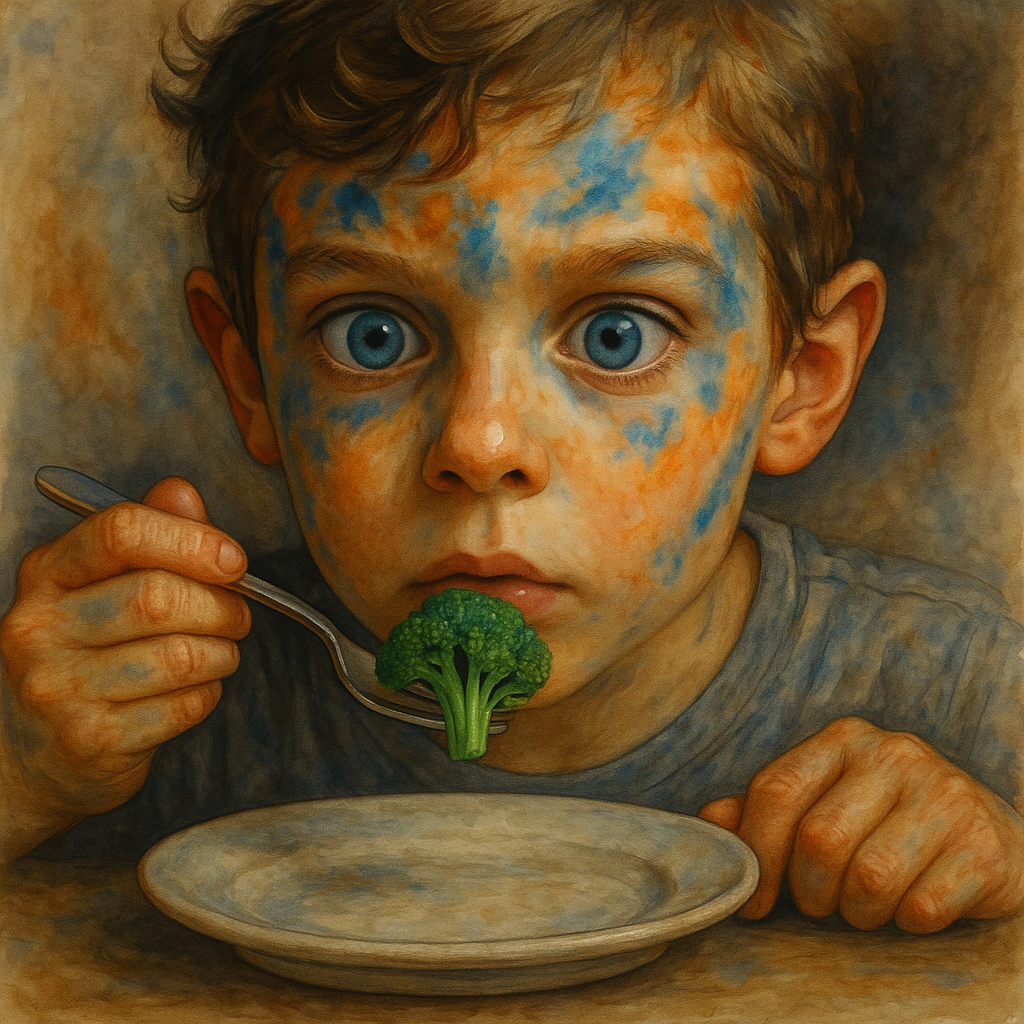My son used to eat everything. Fruits, vegetables, whole grains—you name it, he’d try it. Broccoli? Loved it. Beets? Weirdly into them. Meals were an adventure, and we felt like we’d hit the parenting jackpot.
Until one day, shortly after his second birthday, he didn’t.
No more broccoli.
No more peas.
No more anything.
Suddenly, the only food he’d eat was mac-n-cheese. Not the boxed kind either—he had standards. It had to be homemade. For a while, it felt like we were running a tiny, very specific restaurant with a one-item menu.
We tried everything. We begged, we bribed, we bargained. Nothing worked—until we stopped trying to “fix” it and started trying to understand it.
There was food thrown. There were tears (his and ours). But over time, something shifted. He took a kids’ cooking class. He started helping in the kitchen. Then one night, he plated dinner for the whole family. He made roasted carrots and a spinach salad—and he ate them, too.
It didn’t happen overnight. It took years. But it was worth every frustrating bite that didn’t get eaten.
And we never really figured out the why of it. Because that’s the thing: picky eating isn’t always logical. It’s a phase, a control mechanism, a sensory issue, or sometimes just… life.
Picky eating is incredibly common, and yes, it can be incredibly stressful. But with a little understanding and a handful of smart strategies, you can help your child rediscover food as something to explore—not fear.
Why Kids Get Picky
👃 Sensory Overload Is Real
Some kids don’t just “not like” certain foods—they experience them like an attack. Strange textures, strong smells, or squishy consistencies can make foods feel unbearable. What tastes fine to you might feel like sandpaper or glue to your child. And the taste isn't really the issue. Covering it in cheese sauce won't help. It's just the very existence of the offending food that is upsetting.
🧠 Control Games
Food is one of the few areas kids can control—and they know it. Sometimes picky eating is less about the green beans and more about saying, “I decide.” The more stressed we get, the more they dig in. Think about it. We all get tired of being told what to do. Of being bossed around. We all get tired of 'Eat this, it's good for you.' after awhile.
🧃 Environmental Echo Chamber
Restaurants, kids' menus, birthday parties—these places don’t exactly scream culinary diversity. Chicken nuggets and fries become the default, and exposure to fresh, whole foods shrinks.
🍼 Missed the “Food Adventure Window”?
If a child isn’t introduced to a variety of foods early on, trying new things later can feel more like a risk than a treat. That “window” isn’t closed forever, but it does mean we have to approach new foods with patience and creativity. Yes, patience. When we were kids we ate what was on the table or we didn't eat. We had to clean out plate before we could get up. My sister would it at the table looking at the pile of peas on her plate all night. She still doesn't eat peas. Be patient. You can't force it.
😨 Sometimes It’s About Fear
Some kids develop real anxiety around food—certain smells or textures may trigger panic. This isn’t just pickiness; it’s fear. And it calls for gentleness, not force.
What Actually Helps
🛑 Ditch the Power Struggle
No battles. No “one more bite.” Just a peaceful table where food is offered, not forced. Pressure creates resistance. Relaxation creates room for curiosity. But you can't let unhealthy snacking or a bag of M&M's between meals make up their full calorie count. Use the same strategy for snacking. Offer a variety of healthy options.
🍳 Get Kids in the Kitchen
Kids are more likely to eat what they help make. Give them small jobs—washing veggies, stirring sauces, sprinkling cheese. Let them feel ownership. And it starts with a trip to the grocery store. Plan the meal. Create a shopping list. Let them pick out the foods. And then prepare the meal together. It's a game changer.
🧺 Deconstruct the Plate
Don’t mix everything together and expect it to go down easy. Separate the ingredients: a burrito bowl with rice here, beans there, avocado on the side. Let them build it their way. Or try a family charcuterie board. Ditch the processed meats and use nuts, veggies with peanut butter, cheese, berries. Have fun with it.
👀 Model It
Eat what you want them to eat. Let them see you enjoying it. Enthusiasm is contagious—and more effective than lectures. Eating together as a family is a critical component to a healthy relationship with food.
⏳ Play the Long Game
One bite is a win. Even a touch or a smell is a win. It might take 15 tries before they say yes. That’s not failure—it’s progress.

And a Last Nibble
Picky eating is frustrating, yes—but it’s not forever. And it’s not your fault.
Understanding the why behind picky eating helps you let go of the guilt and focus on the how—how to build positive food experiences, how to offer without pressure, and how to trust the process.
Even if your child currently lives on beige food, they can grow into someone who cooks you spinach one day.
And yes, the mac-n-cheese still shows up now and then in our house—but it’s no longer the only thing on the menu.

